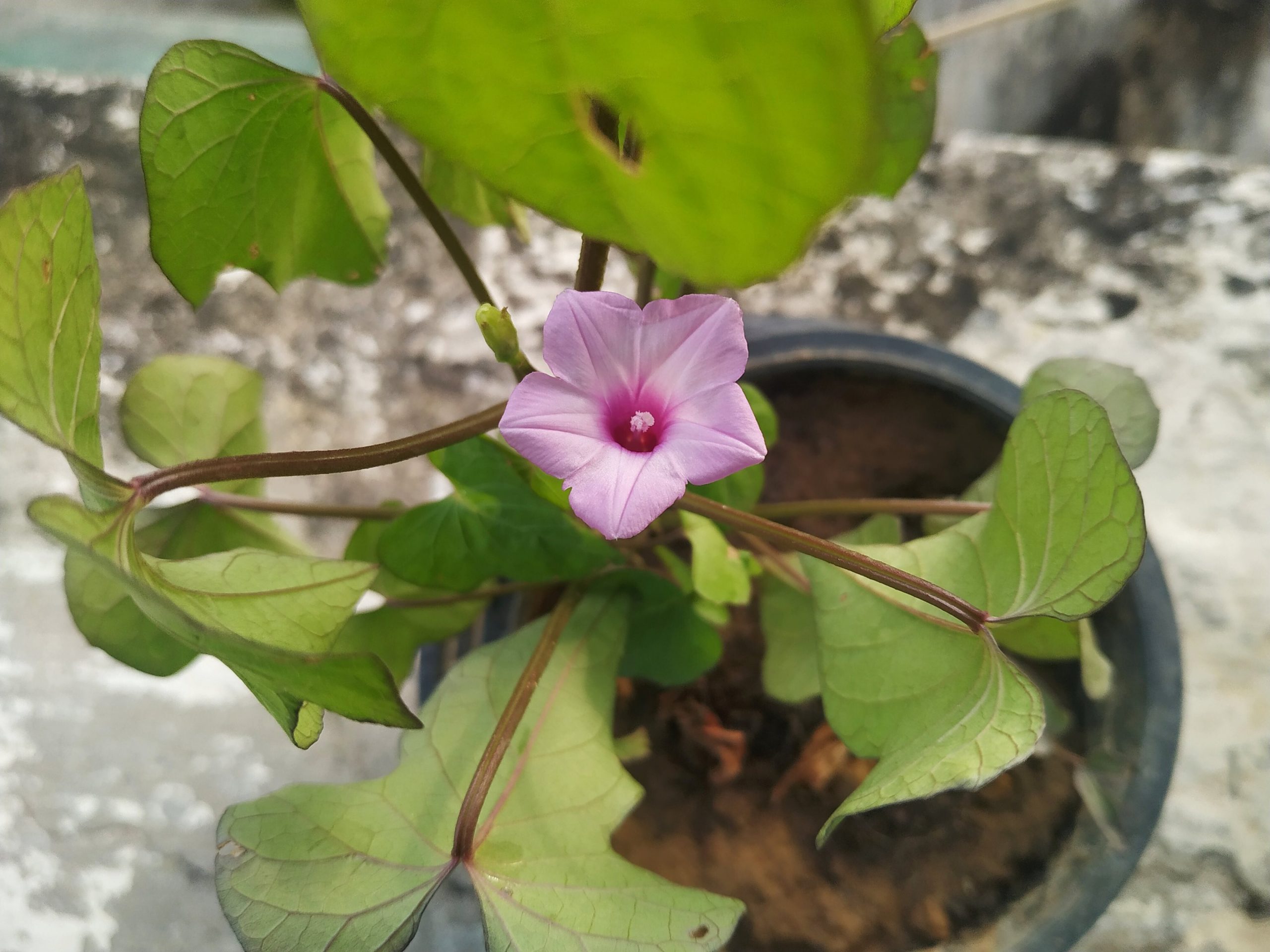In these times that are fraught and frightening, the Semal tree in front of my home terrace in Delhi is a balm for the aching body and soul. The tree is now loaded with fresh green leaves. Semal cotton hangs over its branches and the cotton floats in the air whenever it comes in contact with the summer winds.
The empty roads during this coronavirus lockdown giggle in the golden showers of Amaltas flower, and I love to walk under the sky of the Gulmohar tree, which bears orange flame flowers. Nature and its colours have kept me alive and sane in the times of lockdown.
For someone who is always fascinated by the unknown and unusual things, the lockdown gave me the opportunity to explore the unknown space of nature and biodiversity.
It was two years ago when, in an urge to move away from humans and the chaos around me, I picked up my phone to capture flowers around me. This was a spiritual journey for me; observing the flowers became some form of meditation.
I think, my intention was set so right that I landed up at an office that deals with environmental law. Inside the office, I was learning how legal battles are fought to save our forests, keeping our rivers pristine and air cleaner, and on the streets, I was developing an eye to see flowers with a perspective that I had never possessed before.
A few months back, I had kept an empty flower pot on my terrace. The plant in the pot could not survive the storm and rain which hit Delhi in March this year.
Gradually, another plant, with heart-shaped leaves, started to grow. Maybe its seeds fell in the pot and nature took care of the rest. Every day, I saw this plant with great inquisitiveness and wondered would it be a flowering plant.
Then there was a tremendous storm and lightening that hit the city on the night of April 18, 2020. The next morning when I woke up, I saw a miracle blooming in front of my eyes – the miracle was in the form of a fading purple, bell-shaped flower. My ecstasy moment arrived. I didn’t plant this plant. It grew naturally and now there was a flower!
I was eager to know what flower it was? The plant identification app identified it as ‘Morning Glory’.
The same day, in the afternoon, after lunch, I came out to see the flower. But, by then, it had faded, and I was thinking why did it wither so shortly. I came inside and felt sad. In the evening, the flower drooped! I was heartbroken.
And now, I was even more curious. What kind of flower is this? A bell-shaped flower that blooms in the morning, but withers away the same evening. Until then I had heard of Shiiuli or night-flowering Jasmine, also known as Parijat, the flowers that sparkle like stars in the night.
Does it represent the cycle of life? The Morning Glory flower opens up in the morning — it symbolises soaking up the radiant sun and healing energies of it. The flowers blossom in the morning and die by afternoon or nightfall, making it representative of the sometimes-fleeting nature of affection. But the vine produces new flowers every day during its growing season, representing the renewable nature of love.
I also came across interesting Chinese folklore relating to the Morning Glory. According to Chinese folklore, Chien Nie, a boy, was entrusted to look after a water buffalo. A girl named Chih Neu was responsible for dressing the water buffalo. Soon, both of them fell in love started to ignore the responsibilities and their chores remained unfinished. The Heaven started to thunder with the growing dissatisfaction of the God, and it was therefore commanded that lovers could now meet once a year.
In the Victorian era, the Morning Glory was associated with love in vain, unrequited love. Flower twinning around the fences and trellises. However, Christians considering its ephemeral blooming symbolised it with the brevity of life.
During the lockdown, I had more time to look at the more closely. As I came closer to nature, nature came closer to me.
Another miracle came to me in the form of a pet — a cat who started coming home since we have been quarantined. I would feed her in the morning. She comes relentlessly for her meals. She knows when will I open by the door to feed her. She comes very swiftly, drinks the milk in the bowl. She then goes for a brisk walk, plays with her claws, stretches a bit and comes again near the milk bowl.
Her first behaviour that I noticed was “blinking eyes at me”. I learned when a cat blinks at you, it means she trusts you. Cat blinking is also known as cat kiss. When she shows her bums, means she is content and happy.
I developed a love for the Morning Glory and the cat – a love which is uncorrupted and unconditioned.
During this lockdown, there have many media reports and videos by individuals which show that rivers have become cleaner, the air has become clearer, and animals around the world are having a great time. This shows how, over the years, humans have overexploited nature for personal gains and profit, and it’s time to reflect on our relation and connection with nature.
Dame Jane Morris Goodall, an English primatologist and anthropologist, best known for her best known for a 60-year study of social and family interactions of wild chimpanzees, said: “COVID-19 is a product of our unhealthy relationship with animals and the environment”.
She puts in her commentary published in Mongabay: “Many people believe that we have come to a turning point in our relationship with the natural world. We need to halt deforestation and the destruction of natural habitats around the globe. We need to make use of the existing nature-friendly, organic alternatives, and develop new ones, to feed ourselves and to maintain our health. We need to eliminate poverty so that people can find alternative ways to make a living other than by hunting and selling wild animals and destroying the environment.”
Niharika Awasthi is two years old in the ‘school of nature’ and has learned to identify flowers by their names and not just colors



















